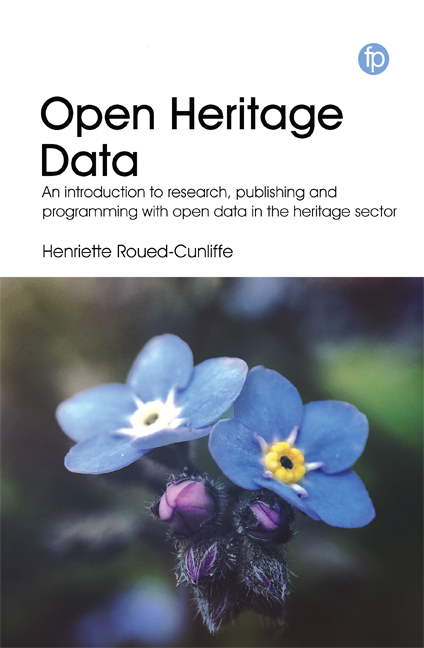 Open Heritage Data
Open Heritage Data Book contents
- Frontmatter
- Dedication
- Contents
- List of Case Studies, Figures and Tables
- List of Abbreviations
- Acknowledgements
- Preface
- Introduction
- 1 Openness in Heritage
- 2 Sharing Legally
- 3 Publishing Open Data
- 4 Using and Reusing Open Data
- 5 Visualising Open Data
- 6 Combining Open Data
- 7 Open Data for Research
- Appendix A Examples Used in the Book
- Appendix B Introduction to Coding
- References
- Index
5 - Visualising Open Data
Published online by Cambridge University Press: 23 July 2020
- Frontmatter
- Dedication
- Contents
- List of Case Studies, Figures and Tables
- List of Abbreviations
- Acknowledgements
- Preface
- Introduction
- 1 Openness in Heritage
- 2 Sharing Legally
- 3 Publishing Open Data
- 4 Using and Reusing Open Data
- 5 Visualising Open Data
- 6 Combining Open Data
- 7 Open Data for Research
- Appendix A Examples Used in the Book
- Appendix B Introduction to Coding
- References
- Index
Summary
Iwill admit that datasets are often complicated and rather boring to look at unless you are able to see the beauty behind the labels and fields. Take, for example, this snippet of GeoJSON from a dataset of street trees in Copenhagen that can be found on the Open Data DK platform (opendata.dk).
[…],﹛“type”:“Feature”,“id”:“gadetraer.2”,“geometry”:﹛“type”:“Point”, “coordinates”:[12.582691256406196,55.69229362391806]﹜,“geometry_name”: “wkb_geometry”,“properties”:﹛“id”:14313,“traeart”:“Tilia europaea”, “slaegt”:“Tilia sp.”,“dansk_navn”:“Park‐Lind”,“slaegtsnavn”:“Lind”, “planteaar”:“1960”,[…]﹜﹜,[…]
To most people this snippet of code looks very confusing (not only because of the mix of Danish and English) and is something that would not have much value in itself. But if you are able to look behind the commas and curly brackets you will see a vast amount of really interesting information (if trees and gardening are your thing, of course!). It tells us that for one specific tree we have the coordinates in longitude and latitude. This allows us to plot the tree as a point on a map. We can see that the tree in question is a Tilia europaea, the Latin name for a common lime tree, and that it was planted in 1960. This information can be used to determine which icon to place on the map, like in Figure 5.1 on the next page.
We could also use the information for labels, or use the date to overlay the icons with different depth of colour so that younger trees appear lighter than older ones.
Another way of visualising this particular dataset could be as a list of tree types with the quantity of each, as shown here:
Ambratra, Liquidambar sp. (25 / 0.13%)
Ask, Fraxinus sp. (1398 / 7.39%)
Avnbog, Carpinus sp. (179 / 0.95%)
Birk, Betula sp. (267 / 1.41%)
Barmispel, Amelanchier sp. (27 / 0.14%).
A third option could be to visualise this sorted and counted dataset as a bar chart with tree types along the y-axis and percentages along the x-axis (Figure 5.2).
All in all, having access to raw data is a powerful thing that enables us to visualise and combine datasets in new and interesting ways.
Previous chapters have shown examples of publishing and reusing heritage data with varying degrees of openness.
- Type
- Chapter
- Information
- Open Heritage DataAn Introduction to Research, Publishing and Programming with Open Data in the Heritage Sector, pp. 75 - 92Publisher: FacetPrint publication year: 2019


